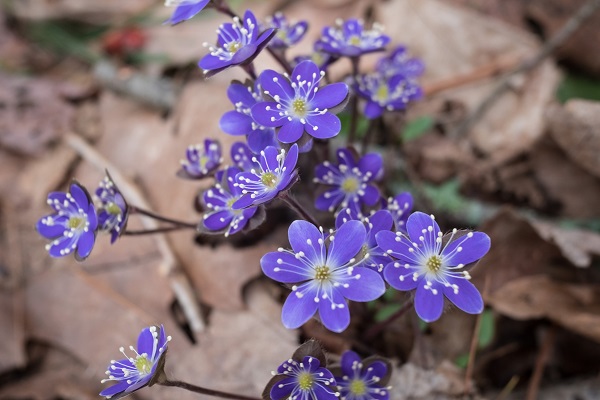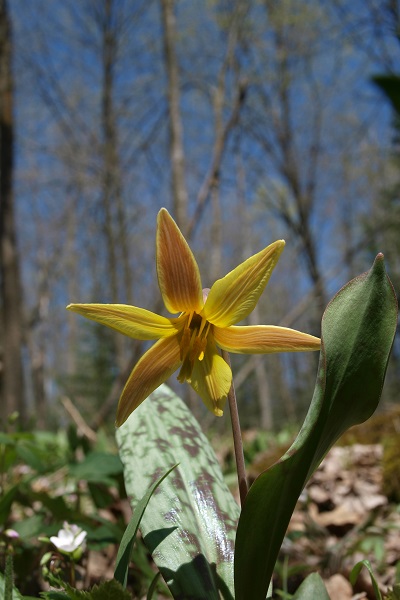
It’s a pleasant surprise to find small, dainty wildflowers peeking up through rough, brown leaves scattered across the forest floor. Such delicate beauty after a stark, frozen winter. Their emergence is a less a lesson about timing and patience, than it is of hardiness. They barely wait for a thawing earth before they surface and each year, it seems, their hardiness is tested as they endure one last snowy lashing of winter.
As you turn your face to the sun and head out on a hike, be on the look out for these woodland beauties:

Bloodroot, with its delicate white petals and yellow stamens, blooms from March to May depending on the region and weather. Look for bloodroot in moist to dry woods and thickets, often on floodplains and near shores or streams on slopes.

Hepatica, with its blue or lavender flowers, can be found either in deeply shaded deciduous (especially beech) woodland and scrub or grassland in full sun. It tolerates snow cover and is one of the early flowers to emerge in spring. The word hepatica derives from the Greek for ‘liver’, because the three-lobed leaf was thought to resemble the human liver. Learn more here.
Jack-in-the-Pulpit are fun to spot! The spathe, known in this plant as “the pulpit” wraps around and covers over and contain a spadix (“Jack”). Because the leaves are trifoliate, groups of three leaves growing together at the top of one long stem, the plant is sometimes confused with poison-ivy. Learn more here.

Trout lilies bloom in early spring before the trees growing above them develop leaves. Blooming at this time allows them unobstructed access to sunlight and time to grow when soil nutrient levels are high. The flowers close at night. Learn more here.

Additional Resources
Celebrating Wildflowers Website
Created by USDA Forest Service botanists and other specialists around the country, Celebrating Wildflowers is dedicated to the enjoyment of the thousands of wildflowers growing on our national forests and grasslands.
Learn about the wildflower plant of the week.
Enjoy a wealth of information about native plants and pollinators.
Explore activities Just for Kids.
Flora of Wisconsin Website
Flora of Wisconsin is a collaborative effort between the herbaria of the UW-Madison and UW-Steven’s Point. It contains information on each of the more than 2600 vascular plant species that occurs in Wisconsin, including photos, distribution maps, specimen records, and more.

